Loading
Journal of Allergy and Infectious Diseases
ISSN: 2692-6334
All Articles
COVID-19 vaccination in children in India: A way forward
Srinivas Mantha
India has an estimated population of 1.39199 billion and current vaccination approach plans to cover adult population (>18 y, about 67.53%) very soon. As on 24 December 2021, the country completed about 1.41 billion doses of COVID-19 vaccines, in about eleven months since the drive began.
J Allergy Infect Dis, 2022, Volume Volume 3, Issue Issue 1, p1-2 | DOI: 10.46439/allergy.3.029
Increased incidence of severe burns in pediatric patients during the COVID -19 pandemic
Kassandra Aglae Salazar Vázquez, Yanyn Ameyaly Cabrera Antonio, Arturo Gerardo Garza Alatorre, Verónica Rodríguez Martínez
During the COVID-19 pandemic, an increase in the incidence of burns in the pediatric population was observed worldwide, in our institution an increase was observed in the same way in the year 2020 and after this in the year 2021, when pandemic restrictions were continued.
J Allergy Infect Dis, 2023, Volume Volume 4, Issue Issue 1, p1-3 | DOI: 10.46439/allergy.4.032
Targeting Caspase-4 and pyroptosis as a new therapeutic approach for asthma
Zbigniew Zasłona, Luke A.J. O’Neill
Asthma is a chronic inflammatory disease of the lung caused by a combination of environmental and genetic factors. Although symptoms of mild asthma are treated with current medications, such as bronchodilators and steroids, severe asthma remains very difficult to manage. Asthma rates are constantly on the rise and there is a clear need for novel asthma therapies especially in severe asthma.
J Allergy Infect Dis, 2020, Volume Volume 1, Issue Issue 1, p1-4 | DOI: 10.46439/allergy.1.001
Selective antibody deficiency syndrome, response to vaccines, diagnosis, and treatment
Alonso-Bello César Daniel, Hernández-Nieto Leticia, Moncayo-Coello Carol Vivian, Graciela Hernández-Silva, Castillo-Narváez Gloria, Mellado-Ábrego Jaime, Ballesteros-González Diego, Ríos-Núñez Elida Berenice, Rico-Rojas David, Rojo-Gutiérrez María Isabel
Selective antibody deficiency syndrome (SAD), is a primary immunodeficiency in which immunoglobulin levels remain normal, but there is a reduced response to polysaccharide antigens after vaccination. SAD is recognized by the International Union of Immunology Societies as a primary immunodeficiency of unknown genetic cause. Patients with SAD are highly susceptible to severe respiratory tract infections with encapsulated bacteria.
J Allergy Infect Dis, 2024, Volume Volume 5, Issue Issue 1, p1-5 | DOI: 10.46439/allergy.5.039
A real life asthma biologic treatment comparison
Remedios Cárdenas Contreras, Rocío Picos Baliña, Eloísa Rubio Pérez, Stefan Cimbollek, Manuel Prados-Castaño, Joaquin Quiralte Enríquez
Currently, it is estimated that only a small percentage of asthmatic patients do not achieve adequate control of the disease despite maintaining high doses of inhaled corticosteroids and assuming that they have a correct adherence and inhalation technique. In fact, severe asthma currently accounts for 5-10% of all asthma cases and is often driven by type 2 inflammatory mediators.
J Allergy Infect Dis, 2025, Volume Volume 6, Issue Issue 1, p1-7 | DOI: 10.46439/allergy.6.048
Feeding cats egg product with Polyclonal-Anti-Fel d1 antibodies decreases environmental Fel d1 and allergic response: A proof of concept study
Noor Al-Hammadi, H. James Wedner, Ebenezer Satyaraj, Cari Gardner, Tarisa Mantia, Scott Sherrill
Background: Cat allergens are a major contributor to environmental allergens' overall burden, but efforts to reduce cat allergens are often unsuccessful.
Objective: To determine whether feeding cats a diet containing an egg product with anti-Fel d1 IgY would produce clinically relevant reductions in allergy symptoms of human subjects.

Building and implementing best practices for referral and management of severe asthma in Canadian healthcare
Godbout K, Bhutani M, Connors L, Chan CKN, Connors C, Dorscheid D, Dyck G, Kaplan AG, Reynolds J, Waserman S
Severe asthma (SA) is asthma that remains uncontrolled despite patient adherence to mainteneance therapies and management of contributing factors, or asthma which worsens when high-dose treatments are reduced. It is estimated that 5-10% of asthma patients in Canada have SA. The condition is a significant burden on patients’ quality of life, and is associated with increased number and severity of exacerbations, hospitalizations, and mortality
J Allergy Infect Dis, 2023, Volume Volume 4, Issue Issue 1, p4-8 | DOI: 10.46439/allergy.4.033
Dynamics of the coronavirus pandemic in Italy and some global predictions
Igor Nesteruk
The pandemic caused by coronavirus COVID-19 are of great concern. A detailed scientific analysis of this phenomenon is still to come, but now it is urgently needed to evaluate the parameters of the disease dynamics in order to make some preliminary estimations of the number of cases and possible duration of the pandemic. The corresponding mathematical models must be simple enough, since their parameters are unknown and have to be estimated using limited statistical data sets.
J Allergy Infect Dis, 2020, Volume Volume 1, Issue Issue 1, p5-8 | DOI: 10.46439/allergy.1.002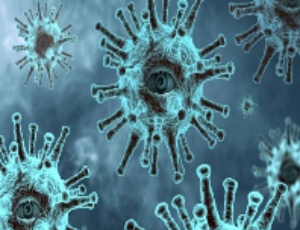
COVID-19 in the post-vaccination era: Who is at risk of severe disease?
Alonso-Bello César Daniel, Pérez-Barragán Edgar, Moncayo-Coello Carol Vivian, Rojo-Gutiérrez María Isabel
Vaccination against SARS-CoV-2 began in December 2020 and with this strategy, the course of the pandemic would be modified. BNT162b2 (Pfizer–BioNTech), mRNA-1273 (Moderna), and ChAdOx1 nCoV-19 (Oxford–AstraZeneca) were the main vaccines that demonstrated a reduction in hospitalization and death from SARS-CoV-2 in clinical trials. Post-vaccination infection by COVID-19 is called breakthrough infection.
J Allergy Infect Dis, 2024, Volume Volume 5, Issue Issue 1, p6-8 | DOI: 10.46439/allergy.5.040
SARS-CoV-2: Omicron changed my perspective
Marisa A. Montecalvo
As a boosted, vaccinated infectious diseases physician I remained careful outside of work. I always wore a mask outside of my home. I even wore a mask while I am driving alone in my car because I needed it for my next encounter and it kept me warm.
So how did I get SARS-CoV-2 infection? The same way most people do, from household exposure [1].

The effect of an aerosol of treignac mineral water concentrated by inverse osmosis in vitro on normal bronchial cells and in vivo on normal rabbit lungs
Jean Sainte-Laudy, Boris Melloni, Vincent Gloaguen, Céline Faugeron Girard
Hydrotherapy is a common technique used in thermal centers, primarily for the external treatment of skin pathologies. Various centers specializing in the management of infectious and inflammatory respiratory pathologies use hydrotherapy techniques internally, as well as through nasally, and bronchially
J Allergy Infect Dis, 2025, Volume Volume 6, Issue Issue 1, p8-12 | DOI: 10.46439/allergy.6.049
Non-mesh, long-lasting insecticidal net use amongst nomadic communities in Garissa County, Northern Kenya
Stephen Munga, Peter Wamae
Malaria remains a major public health problem in Kenya despite the concerted control efforts. At the moment it is estimated that malaria accounts for 13-15% of all hospital in-patient admissions and 30% of all the patients seen at the outpatient clinics.
J Allergy Infect Dis, 2023, Volume Volume 4, Issue Issue 1, p9-11 | DOI: 10.46439/allergy.4.035
Influenza infection and aortic dissection: A commentary on the association between a viral syndrome and major cardiac events in the context of the current COVID-19 pandemic
Carmel Ashur, Anna Conlon, Kim A. Eagle, Marion A. Hofmann Bowman
Acute type A aortic dissection (ATAAD) is the leading cause of morbidity and mortality for patients with thoracic aortic aneurysms, despite significant advances in the surgical treatment. An aortic dissection is a life-threatening condition which occurs when blood enters through a tear in the wall of the aorta causing the aortic layers to separate or “dissect”.
J Allergy Infect Dis, 2020, Volume Volume 1, Issue Issue 1, p9-14 | DOI: 10.46439/allergy.1.003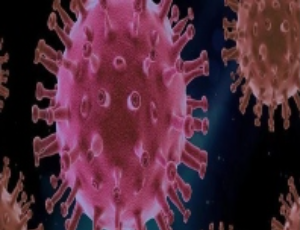
Intranasal therapy and COVID-19: A comprehensive literature review
Camille Celeste Go, Krunal Pandav, Manoj Reddy Somagutta, Jacqueline Kaye Go, Arian Bethencourt-Mirabal, Kinal Bhatt, Marcos A. Sanchez-Gonzalez, Gustavo Ferrer
The severe acute respiratory syndrome coronavirus 2 (SARS-CoV-2), the causative agent of COVID-19, is highly virulent and can be transmitted via respiratory droplets and close contact. Recent studies suggest that although viral load could be a poor predictor of disease, the concentration of the virus in the respiratory tract may be linked to contagiousness when coupled with significant co-variables factors such as nasal discharge and cough, hence impacting transmission.
J Allergy Infect Dis, 2021, Volume Volume 2, Issue Issue 1, p9-16 | DOI: 10.46439/allergy.2.016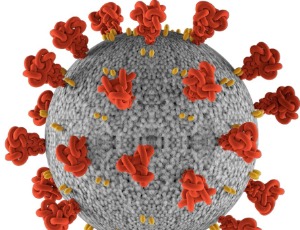
Dominated respiratory infections which exacerbate asthma in asthmatic children
Ali Mirhosseini, Hamid Ahanchian, Samira Basharkhah, Amir Hashem Asnaashari, Faezeh Sabet, Fatemeh Sadat Mohammadi, S.A Rahim Rezaee
Asthma is classified as an inflammatory airway disorder. The triggering factors, such as aeroallergens, air pollutants, and viral infections, promote asthma symptoms . Despite the progress made in the prevention and management of the disease, unfortunately, the number of morbidities is increasing every year.
J Allergy Infect Dis, 2024, Volume Volume 5, Issue Issue 1, p9-16 | DOI: 10.46439/allergy.5.041
Why are men more severely affected by COVID-19?
Sadia Alam, Olga Pinkhasov, Serin Seckin, Ozgul Muneyyirci- Delale
The novel Coronavirus disease outbreak has impacted the lives of millions of people around the world. As of June 10, 2022, according to the World Health Organization COVID-19 Dashboard, 6, 305, 308 deaths due to COVID complications have occurred worldwide with the number of cases still rising. Global data show that although incidence of disease is comparable, severity and mortality of disease is significantly higher in males than females [1].
J Allergy Infect Dis, 2022, Volume Volume 3, Issue Issue 1, p10-16 | DOI: 10.46439/allergy.3.031
Significant 24 h recovery and survival of Culex mosquitoes exposed to pyrethroid insecticides using the CDC bottle bioassay
Abiodun Obembe
Insecticides deployed for mosquito vector control rely on the susceptibility of the targeted vector population for continued efficacy and public health protection. The Centers for Disease Control and Prevention (CDC) bottle bioassay is a standard method used for rapid mosquito insecticide resistance assessment without measuring sublethal or delayed insecticidal effects.
J Allergy Infect Dis, 2023, Volume Volume 4, Issue Issue 1, p12-15 | DOI: 10.46439/allergy.4.036
Innate lymphoid cell development
Mohamed Khosroshahi Leila, Sadeghalvad Mona, Takei Fumio
Innate lymphoid cells (ILCs) are a heterogeneous family of lymphocytes that lack conventional antigen receptors and play roles in tissue homeostasis and immune responses. Based on their transcriptional and functional properties, ILCs are classified into three main groups: group 1 ILCs (ILC1s and NK cells), group 2 ILCs (ILC2s), and group 3 ILCs (ILC3s). The developmental origins of ILCs remain an area of active investigation.
J Allergy Infect Dis, 2025, Volume Volume 6, Issue Issue 1, p13-16 | DOI: 10.46439/allergy.6.050
Linear IgA bullous dermatosis in patients with inflammatory bowel disease should not be mistaken for drug allergy
Kathy N. Williams, Angelica Nocerino, Silvija P. Gottesman, Shelly Rivas, Arun Swaminath
A 36-year-old Hispanic male, with a history of ulcerative colitis (UC) presented to the inflammatory bowel disease (IBD) clinic for initial evaluation. Over the past six years, the patient had been treated for his UC with various therapies including prednisone, multiple mesalamine formulations, and budesonide but always discontinued therapy due to what he perceived were adverse drug reactions. He described onset of pruritic blisters, affecting his chest, abdomen, back, and arms.
J Allergy Infect Dis, 2020, Volume Volume 1, Issue Issue 1, p15-17 | DOI: 10.46439/allergy.1.004
Heparin binding proteins on monocyte cell surfaces regulates pre-inflammatory responses in diabetes
Andrew Jun Wang, Aimin Wang, Vincent Hascall
Many diabetic complications, such as renal and cardiovascular disease, share a common association with extensive and chronic inflammation due to infiltration by activated leukocytes that originate from the bone marrow (BM). Our previous study demonstrated that macrophage progenitor cells that divided in hyperglycemia induced intracellular synthesis of hyaluronan and became pro-inflammatory macrophages (Mpi), and that the presence of low concentrations of heparin (~50 nM) prevented the intracellular HA synthesis and promoted the formation of tissue repair macrophages (Mtr).
J Allergy Infect Dis, 2023, Volume Volume 4, Issue Issue 1, p16-23 | DOI: 10.46439/allergy.4.037
Modulation of type 2 inflammation by sensing immunomodulatory RNA in house dust mite and viruses
Hamad H. Alanazi, Xiao-Dong Li
The incidence of allergic diseases has been increasing over the past few decades worldwide. Although allergic reactions are often characterized by an overzealous Th2 inflammatory response, the underlying mechanisms remain poorly defined. House dust mite (HDM) is one of the most common indoor allergens that cause allergic diseases such as asthma.
J Allergy Infect Dis, 2021, Volume Volume 2, Issue Issue 1, p17-23 | DOI: 10.46439/allergy.2.017
Impact of SARS-CoV-2 vaccinations on pandemic dynamics: Trends in cases, deaths, and fatality risks
Igor Nesteruk
Despite the decrease in COVID-19 testing and reporting new infections, the numbers of new cases and deaths per capita registered in some European countries and USA in September 2024 were higher than endemic limits and exceeded seasonal flu mortality. These facts make the development of new vaccines or the further use of existing ones very urgent.
J Allergy Infect Dis, 2025, Volume Volume 6, Issue Issue 1, p17-24 | DOI: 10.46439/allergy.6.051
Mitochondrial disease patients and rotavirus infection complications
Savannah Battleson, Anna Betler, Hayden Divers, Jack Kloecker, Iradukunda Esperance, Nicholas Farrell, Molly Sawyer, Azhar Rahama, Ojus Dalvi, Gary Vanderlaan
Rotavirus (RV) is an agent of gastroenteritis and, to a lesser extent, neurological manifestations including seizures and epilepsy. Before the development of effective vaccines, rotavirus was among the leading global drivers of life-threatening diarrhea in neonates and children less than five years of age.
J Allergy Infect Dis, 2024, Volume Volume 5, Issue Issue 1, p17-28 | DOI: 10.46439/allergy.5.042
- Abstract |
- Full Text |
- Cite |
- Supplementary File
Multisystem inflammatory syndrome in children (MIS-C): The role of viral superantigens in COVID-19 disease
Bittmann S, Weissenstein A, Luchter E, Moschüring-Alieva E, Villalon G
Superantigens are viral or bacterial virus proteins that can specifically activate a large ratio of T cells. In contrast to classic peptide antigen recognition, superantigens do not require processing in small peptides, but act as fully or partially processed proteins. They can bind to class II molecules of the main histocompatibility complex and stimulate T cells that express certain beta chains of the T cell recipient V.
J Allergy Infect Dis, 2020, Volume Volume 1, Issue Issue 1, p18-20 | DOI: 10.46439/allergy.1.005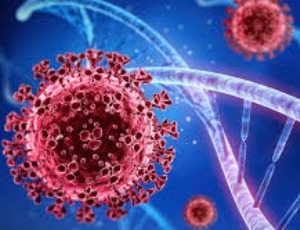
Ticks positive for Lyme disease causing bacteria present on white-tailed deer in Northeast Iowa
Brianna L. Finnegan, Taline M. Holman, Kelly A. Grussendorf
n Iowa there has been an upward trend in the number of cases of Lyme disease. Due to this increase, it is important to understand the transmission pattern and the factors that play a role in the spread of this disease. Lyme disease is caused by the bacterium, Borrelia burgdorferi, and is transmitted by Ixodes scapularis, within the United States. I. scapularis has a two-year life cycle that includes three life stages: larva, nymph, and adult, and requires a blood meal between each stage.
J Allergy Infect Dis, 2020, Volume Volume 1, Issue Issue 2, p21-24 | DOI: 10.46439/allergy.1.006
Short commentary on fractional model for Middle East Respiratory Syndrome Coronavirus on a complex heterogeneous network
Ibrahim Obaya, H. A. A. El-Saka
Middle East Respiratory Syndrome caused by one of the viruses of the Corona family is among the most dangerous diseases that have spread recently, with an estimated death rate of approximately 36%. Humanity has not been exposed to this type of epidemic since the spread of influenza A in 1918.
J Allergy Infect Dis, 2023, Volume Volume 4, Issue Issue 1, p24-25 | DOI: 10.46439/allergy.4.038
Severe SARS-CoV-2 infection treated with the mannose binding lectin associated serine protease 2 (MASP2) inhibitor Narsoplimab
Michael D. Knierman, B.S, Valentina Gelfanova, M.S., Neil A. Zlatniski, M.D, John H Mullen, M.S, Robert W. Siegel Ph.D., Robert J. Konrad, M.D.
In SARS-CoV-2 infection, increased inflammation, complement activation, and excessive clotting are responsible for morbidity and mortality. Recent reports suggest that mannose binding lectin (MBL) and mannose-associated serine protease 2 (MASP2) lies at the intersection of these pathways. Consistent with this concept, we observed that the SARS-CoV-2 spike protein binds MBL-MASP1/2 complex in human serum. We therefore suggested treating a severely ill, ventilated SARS-CoV-2 patient in whom all other treatments had failed with the anti-MASP2 antibody Narsoplimab. Following a 4-week course of Narsoplimab, the patient made a near complete recovery, supporting the utility of MASP2 inhibition for treating hospitalized SARS-CoV-2 patients.
J Allergy Infect Dis, 2021, Volume Volume 2, Issue Issue 1, p24-28 | DOI: 10.46439/allergy.2.018
Exploring the relationship between sex and long COVID
Luis Fonte
In December 2019, an outbreak of pneumonia, of unknown cause and often-fatal evolution, emerged among people linked to a seafood and live animal market in the city of Wuhan, China. Days later, health authorities in that country reported that the epidemic outbreak in that location was caused by a coronavirus, later named SARS CoV-2 (Severe Acute Respiratory Syndrome Coronavirus 2).
J Allergy Infect Dis, 2025, Volume Volume 6, Issue Issue 1, p25-27 | DOI: 10.46439/allergy.6.052
The unit-based stress and anxiety correlation of healthcare workers during the COVID 19 outbreak
Mustafa Çalık, Nedim Uzun, Neval Aksoy
Stress is defined as ''a state of mental or emotional strain or tension resulting from adverse or very demanding circumstances''. In today’s world, we are hearing the word “stress” quite frequently in our daily lives and conversations. Stress comes out in different forms that can change from one person/society to another. The physiological results of stress are regulated by the central nervous system (CNS) through the stimulation of the hypothalamic-pituitary-adrenal (HPA) axis.
J Allergy Infect Dis, 2020, Volume Volume 1, Issue Issue 2, p25-31 | DOI: 10.46439/allergy.1.007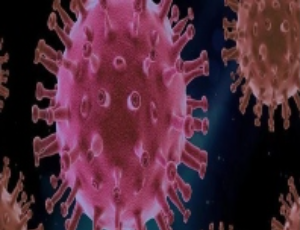
Our clinical experience in Van Province of Turkey; The relationship between Fasciola hepatica and eosinophil count
Özge Atik, Ali Can, Mehmet Göktürk Kaban, Yusuf Kayar
Fasciola hepatica is a liver trematode with worldwide animal distribution, most commonly seen in sheep- and cattle-raising areas. The flukes are leak-like, flat worms, measuring 2–4 cm. The number of reports of Fasciola hepatica has increased significantly recently, and several geographical areas have been described as endemic for the disease in humans, with prevalence and incidence ranging from low to very high.
J Allergy Infect Dis, 2025, Volume Volume 6, Issue Issue 1, p28-35 | DOI: 10.46439/allergy.6.053
Monitoring clinical trials in infectious diseases
David L DeMets, PhD, Thomas R Fleming, PhD, Susan S Ellenberg, PhD
In early 2020, the contagious and deadly virus, SARS-CoV-2, was identified. The virus spread rapidly worldwide and was declared a pandemic by the World Health Organization (WHO) in March of 2020 [1]. While many who became infected remained asymptomatic, an alarming number of infected individuals developed severe symptoms, often requiring hospitalization and intensive care, or resulting in death.
J Allergy Infect Dis, 2021, Volume Volume 2, Issue Issue 1, p29-32 | DOI: 10.46439/allergy.2.019
Effects of helminth co-infections on COVID-19 outcome
Leonor Chacín-Bonilla
Helminths exert systemic immunomodulatory effects characterized by a deviation to a Th2 pattern cytokines. The potential detrimental influence of preexisting helminths infections on COVID-19 by the Th2-like cytokine response is a concern in helminths endemic areas. However, there is also the assumption that preexisting helminth infections may be beneficial by reducing the uncontrolled Th1 pro-inflammatory cytokine response and disease severity.
J Allergy Infect Dis, 2024, Volume Volume 5, Issue Issue 1, p29-34 | DOI: 10.46439/allergy.5.043
Basic reproduction number, effective reproduction number and herd Immunity: Relevance to opening up of economies hampered by COVID-19
Srinivas Mantha
Several countries are in different phases of safely lifting the lockdowns necessitated by the Covid-19 pandemic and re-opening their economies. As they do so, it is important for authorities to recommend or impose some public health measures like social distancing and wearing face masks. Scientific articles are appearing in peer reviewed medical journals and even in the lay press on this topic. Some of the scientific definitions used in these articles might be erroneous.
J Allergy Infect Dis, 2020, Volume Volume 1, Issue Issue 2, p32-34 | DOI: 10.46439/allergy.1.008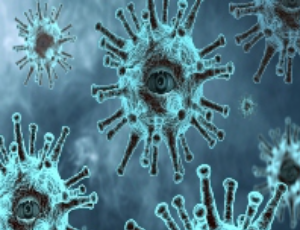
The Pan Degenerate Amplification and Adaptation (PANDAA) assay: a solution for HIV-1 drug resistance testing in a resource limited setting?
Vinie Kouamou, Alan M McGregor
In resource limited settings (RLS), the resources and capacity to perform standard genotype resistance testing for the management of antiretroviral therapy (ART) drug resistance in People Living With HIV/AIDS (PLHIV) are limited. Therefore, in most instances, ART drug switches are based on unreliable clinical and laboratory data. Thus, such switching may occur unnecessarily or individuals may be switched to sub-optimal treatment, leading to the accumulation of drug resistance mutations (DRMs).
J Allergy Infect Dis, 2021, Volume Volume 2, Issue Issue 2, p33-35 | DOI: 10.46439/allergy.2.020
A newly discovered dendritic cell subtype responsible for viral and dust mite inflammation
Shih-Chao Lin
Ralph Steinman discovered and defined dendritic cells (DCs) in the 1970s [1] and at the time, no one would have expected the diversity of DC lineages to be discovered as well as their contribution to playing out the orchestra that is the adaptive immune response. In the late 20th century, researchers identified and characterized various DC subtypes, such as conventional DC (cDC), plasmacytoid DC (pDC), and Langerhans cell (LC).
J Allergy Infect Dis, 2020, Volume Volume 1, Issue Issue 2, p35-37 | DOI: 10.46439/allergy.1.009
Chemical characterization of red imported fire ants with colony development
Jian Chen
The red imported fire ant, Solenopsis invicta Buren, poses a significant threat to public health due to its venomous stings. While the chemistry of fire ants has been well investigated, most studies have focused on ants from mature colonies. The dynamic changes in chemical compositions during colony development have been less explored. In this study, we established S. invicta colonies using newly collected queens from the field and then tracked the chemistry of workers as the colonies developed. Our findings reveal that the chemistry of fire ant workers undergoes significant changes with the development of the colonies. However, the change in chemical diversity was not necessarily in the same direction for all individual glands.
J Allergy Infect Dis, 2024, Volume Volume 5, Issue Issue 1, p35-43 | DOI: 10.46439/allergy.5.044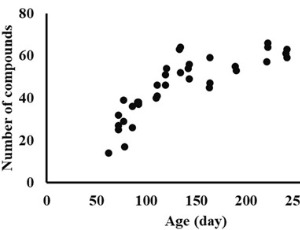
- Abstract |
- Full Text |
- Cite |
- Supplementary File
COVID-19 health care worker infection: Additional concerns
Srinivas Mantha
Health Care worker (HCW) infection with corona virus disease 2019 (COVID-19) is a serious problem and there is a potential risk of mortality associated with it [1]. Such infection is generally attributed to transmission from patients with COVID-19 infection and there are now recommendations for best practices to limit such transmission.
J Allergy Infect Dis, 2021, Volume Volume 2, Issue Issue 2, p36-38 | DOI: 10.46439/allergy.2.022
Knowledge, perceptions, and practices related to soil transmitted helminth infections among family doctors in the municipality of San Miguel Del Padrón, Havana. Results of an intervention to improve expertise
Ingrid Domenech Cañete, Annia Fong González, Yoanka Moreira Perdomo, Yisel Hernández Barrios, Dennis Pérez Chacón, Yoandra Sollet Céspedes, Delmis Álvarez Gainza, Fidel Núñez Fernández, Luis Fonte Galindo
Almost all programs for the control of soil-transmitted helminth infections implemented across Asia, Africa, and Latin America have focused on at-risk population through mass deworming, health education, and, when possible, environmental sanitation, underestimating the importance of the physician's role in these populations. The physician who provides services in the communities is an opinion leader, and if equipped with the necessary cognitive tools, could be crucial in any attempt to control many entities, including soil-transmitted helminth infections.
J Allergy Infect Dis, 2025, Volume Volume 6, Issue Issue 1, p36-41
Possible protective role of 17β-estradiol against COVID-19
Nabab Khan
Severe acute respiratory syndrome-coronavirus 2 (SARS-CoV-2) is the virus that causes coronavirus disease 2019 (COVID-19); a worldwide pandemic as declared by the World Health Organization (WHO). SARS-CoV-2 appears to infect cells by first binding and priming its viral-spike proteins with membrane-associated angiotensin-converting enzyme 2 (ACE2) and transmembrane protease serine 2 (TMPRSS2).
J Allergy Infect Dis, 2020, Volume Volume 1, Issue Issue 2, p38-48 | DOI: 10.46439/allergy.1.010
Women who have sex with women (WSW) and women who have sex with women and men (WSWM) in the HIV/AIDS prevention campaigns
Obón-Azuara B, Gasch-Gallén A, Gutiérrez-Cía I, Tomás-Aznar C
Women who have sex with women (WSW) and women who have sex with women and men (WSWM) receive less medical attention than the rest of the population. It is due to structural factors (such as socio-economic and political context, social structure), negative attitudes of professionals, and a lack of published data about the health problems that affect these women.
J Allergy Infect Dis, 2021, Volume Volume 2, Issue Issue 2, p39-41 | DOI: 10.46439/allergy.2.021
Multisystem inflammatory syndrome in Adults (MIS-A)
Bertha Serwa Ayi
SARS-CoV-2 virus is the cause of COVID-19 disease. This disease was initially thought to be a pure respiratory illness characterized by cough and fever however it soon became evident that it could cause kidney failure, strokes and involve multiple organ systems as the acute phase evolves into a cytokine storm 10-12 days after symptom onset [1] In April of 2020 reports from Europe [2] and United States highlighted MIS-C which occurs two to four weeks after the initial infection [3].
J Allergy Infect Dis, 2021, Volume Volume 2, Issue Issue 2, p42-45 | DOI: 10.46439/allergy.2.023
Impact of vaccination and testing levels on the COVID-19 waves
Igor Nesteruk
The first studies of the effectiveness of SARS-CoV-2 testing appeared in 2020 immediately after the pandemic outbreak. In 2021, with the advent of a sufficient number of vaccinated people, it became possible to study the impact of vaccination levels on the COVID-19 pandemic dynamics. Constant changes in its dynamics caused by changes in quarantine conditions and algorithms for testing and vaccination, the emergence of new strains require updating and rethinking the results of previous studies.
J Allergy Infect Dis, 2024, Volume Volume 5, Issue Issue 1, p44-55 | DOI: 10.46439/allergy.5.045
COVID-19: Aspects of outpatient treatment
Moritz Paar
Coronavirus Disease 2019 (COVID-19) currently has become a significant public health crisis and one of leading causes of death internationally. A considerable number of cases progresses to pneumonia with severe respiratory failure. So far, many studies address reduction of inpatient mortality and containment of the spread of infection. Nevertheless, most infected people develop smooth symptoms and are treated ambulatory.
J Allergy Infect Dis, 2021, Volume Volume 2, Issue Issue 2, p46-51 | DOI: 10.46439/allergy.2.024
Policy and law changes to address healthcare inequities for minority populations during COVID-19
Christina M. Williams, Rahul Chaturvedi, Rodney A. Gabriel
While other countries have begun to see a flattening of the Severe Acute Respiratory Syndrome – Coronavirus-2 (SARS-CoV-2) curve, the United States continues to see a rise in cases, with approximately 7.4 million confirmed cases to date. Even more worrisome, various news articles have begun to shed light on the healthcare inequities that have become increasingly more transparent during this crisis.
J Allergy Infect Dis, 2020, Volume Volume 1, Issue Issue 3, p49-52 | DOI: 10.46439/allergy.1.011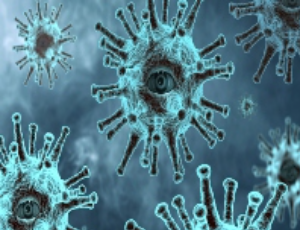
Nonstructural proteins of SARS-CoV-2
Jason Y Tang, Igor F. Tsigelny, Valentina L. Kouznetsova
COVID-19 is a serious global health threat caused by severe acute respiratory syndrome coronavirus 2 (SARS-CoV-2). The virus enters human host cells through the recognition of angiotensin converting enzyme 2 (ACE2) receptors or cluster of differentiation 147 (CD147) via the virus’s spike glycoprotein. Once inside the cell, SARS-CoV-2 uses its genomic RNA as template to produce the two overlapping polyproteins, pp1a and pp1ab, that are subsequently cleaved into 16 nonstructural proteins (NSPs).
J Allergy Infect Dis, 2021, Volume Volume 2, Issue Issue 3, p52-65 | DOI: 10.46439/allergy.2.025
Hyponatremia in COVID-19 infection: possible causal factors and management
José Carlos de la Flor Merino, Francisco Valga Amado, Belén Biscotti Rodil, Alexander Marschall, Miguel Rodeles del Pozo
SARS-CoV-2 disease (COVID-19) has dramatically increased since March 2020. There is no sufficient data to establish the risk of acquiring the hyponatremia in patient with COVID-19 infection. The prevalence, causal factors, clinical characteristics, severity, treatment and prognosis of hyponatremia in patients with pneumonia due to COVID-19 is not yet known, although several articles on kidney injury and electrolyte abnormalities have recently been described.
J Allergy Infect Dis, 2020, Volume Volume 1, Issue Issue 3, p53-56 | DOI: 10.46439/allergy.1.012
Load-and-go molecular diagnostics for human papilloma virus detection
Minal Dakhave, Amrita Khaire, Shruti Gadekar, Kamini Patil
The present study describes analytical and clinical performance of the HPV 16 & 18 assay for the detection of HPV specific DNA with near point-of-care utility. A room temperature compatible real time PCR test was developed for detection and discrimination of HPV 16/18 in a single tube. The test was integrated and validated on Compact series automated platform for analytical performance (sensitivity, specificity, accuracy).
J Allergy Infect Dis, 2024, Volume Volume 5, Issue Issue 1, p56-61 | DOI: 10.46439/allergy.5.046
The impact of HIV and HAART in the pathogenesis of COPD
Elaine A. Fletcher, Chimuanya Okoli, Robert Foronjy
The advent of highly active antiretroviral therapy has significantly increased the longevity of people living with HIV infection. Consequently, the HIV patient population is maturing, and age-related diseases now have a much greater impact on their health and well-being than do HIV associated infections. Cigarette smoke exposure is highly prevalent in the HIV community and chronic smoke inhalation triggers the onset and progression of chronic obstructive pulmonary disease (COPD).
J Allergy Infect Dis, 2020, Volume Volume 1, Issue Issue 3, p57-65 | DOI: 10.46439/allergy.1.013
Applications of impulse oscillometry in the diagnosis and monitoring of preschool asthma
Alberto Vidal
Impulse oscillometry is a lung function test that has become more widely used over the past 30 years. It is particularly useful in patients who have difficulty performing forced respiratory maneuvers, such as preschool children, who have shorter expiration times, less strength to inhale, less coordination and shorter attention spans than older children or adults.
J Allergy Infect Dis, 2024, Volume Volume 5, Issue Issue 1, p62-68 | DOI: 10.46439/allergy.5.046
Period-varying confirmed case-fatality risk still being depicted
Wangping Jia, Ke Han, Haibo Li, Miao Liu, Yao He
Kathy Leung and colleagues assessed the transmissibility and severity of coronavirus disease 2019 (COVID-19) during the first wave in mainland China outside Hubei. Their research will contribute to resist the potential second wave. The confirmed case-fatality risk (cCFR) adjusting for the time between onset and death was used as a better measure of the severity of COVID-19. However, the cCFR and its correlation with the number of hospital beds per 10,000 population may be inaccurate and misleading.
J Allergy Infect Dis, 2020, Volume Volume 1, Issue Issue 3, p66-67 | DOI: 10.46439/allergy.1.014
Impact of COVID-19 vaccination drive in adults on vaccine-induced immunity in India: A Markov cohort model
Srinivas Mantha, Sudha Lakshmi Tripuraneni, Venkat Ramana Rao Mantha
Objective: Need to control the COVID-19 pandemic resurgence is a priority in India which has an estimated population of 1.39199 billion. Immunity whether acquired by recovery or vaccine, controls an infectious disease epidemic. In case of COIVD-19, the latter is more desirable. The objective of this study is to answer a research question “What is the impact of current vaccination drive in adults in generating vaccine-induced immunity in India?”
J Allergy Infect Dis, 2021, Volume Volume 2, Issue Issue 3, p66-72 | DOI: 10.46439/allergy.2.026
Multiplexing with a new dimension for serological analysis of infectious diseases
Shubhagata Das, Stephen Angeloni, Sherry Dunbar
In April 2021, researchers from the University of Rochester reported on the methods used to convert multiplex SARS-CoV-2 IgG serology and neutralization assays into novel dual reporter IgG and IgM assays on the Luminex® xMAP® INTELLIFLEX DR-SE (RUO) System. The multiplex SARS-CoV-2 IgG detection assay was developed by Cameron et al. on the Luminex FLEXMAP 3D® System for detecting IgG antibodies against the spike (S), receptor-binding domain (RBD), and nucleocapsid (Nc) antigens of SARS-CoV-2.
J Allergy Infect Dis, 2021, Volume Volume 2, Issue Issue 3, p73-74 | DOI: 10.46439/allergy.2.027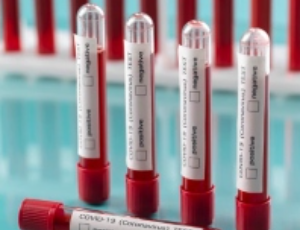
Possible therapeutic targets for SARS-CoV-2 infection and COVID-19
Nabab Khan, Nirmal Kumar, Jonathan D. Geiger
SARS-CoV-2 infection causes COVID-19, which has emerged as a health emergency worldwide. SARS-CoV-2 infects cells by binding to ACE2 receptors and enters into the cytoplasm following its escape from endolysosomes. Once in the cytoplasm, the virus replicates and eventually causes various pathological conditions including acute respiratory distress syndrome (ARDS) that is caused by pro-inflammatory cytokine storms.
J Allergy Infect Dis, 2021, Volume Volume 2, Issue Issue 3, p75-83 | DOI: 10.46439/allergy.2.028
